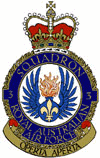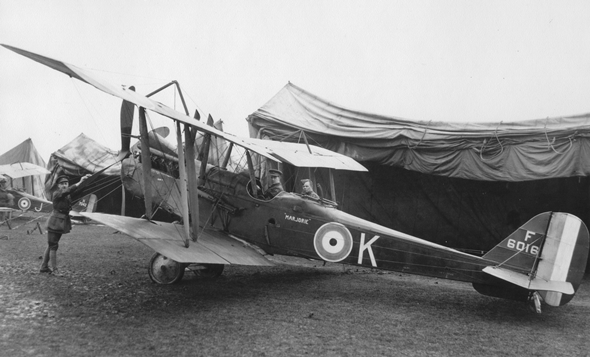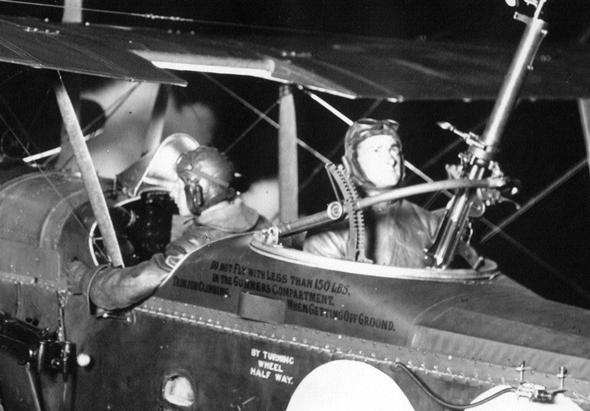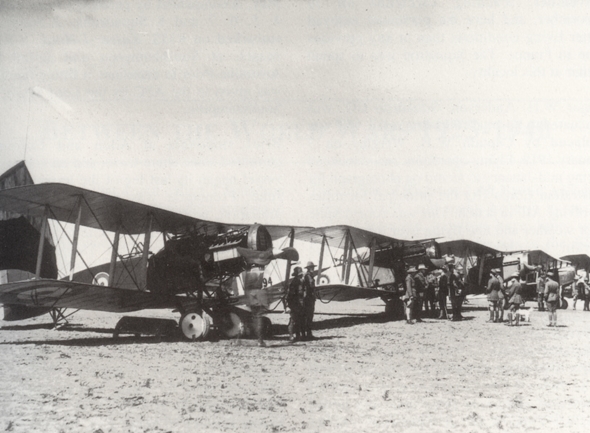
History of the 3SQN
Fabric Worker, Fabric Worker Assistants,
Safety Equipment Worker & Aircraft Life Support Fitters
1916 to 2006
Welcome to the 3SQN ALSFITT/SEW/Fabric Worker site. The data-base follows the same style as the 75SQN lists in that it is done in
different eras, giving the place, the date and type of aircraft used. Photos of the aircraft are included and where possible photos of
the Life Support members and equipment.
Once again I perused the Personnel Occurrence Reports at Canberra to get the list of names. Whilst looking through the POR’s I discovered
that one member, whilst being a Fabric Worker, was also qualified as an Aircraft Gunner during the 1920’s. I also found out that many
Fabric Workers, during the 1940’s, were trained as Parachute Packers, doing the Parachute Personnel Course. This is the first documented
evidence of the trade packing parachutes. Another interesting point is that whilst 75SQN had Fabric Workers Assistants 3SQN did not.
One thing that was the same with all the lists I have done to date was that the last Fabric Workers appeared around the late 1960’s with
the SEW’s taking over till the late 1980’s.
Many thanks once again go to Janet Beck at the RAAF Historical Records Section. I must also thank 3SQN for the use of their historical
photos, and many thanks to Pete ‘Bags’ Lewin for helping with research at Canberra, for putting me up at his place and for letting me
empty the fridge of beer! Hope everyone enjoys the trip down memory lane.
Paul “Changa” Mason
Ex 3SQN “milk drinker
Following the outbreak of war negotiations between the Australian and British Governments led to the formation of a Squadron at Point Cook. This unit was originally designated No 2 Squadron AFC, then was re designated No 69 Squadron RFC and finally became No 3 Squadron AFC. The Squadron had 18 officers and 230 airmen.

AVRO 504K ~ Photo Shuttleworth Trust
The Squadron proceeded to South Carlton and came under the control of the 23rd Wing RFC. In 1917 the Squadron was split into three flights and training began on AVRO 504 and BE2e aircraft before converting to RE8’s. The officers were sent to Brooklands for Artillery Observation Courses. Upon completion of the courses the Squadron prepared for deployment to France.

Re8 aircraft outside 3SQN hangar at Savy 1917 ~ Photo 3SQN
The Squadron arrived at Savy France on the 10 September 1917, it was the first AFC Squadron to arrive in France. The Squadron operated at first from Savy,
then Bailleul Flanders, Poulainville near Amiens, Villers Bocage and Proyart. Whilst in France the Squadron operated from ten aerodromes, carried out almost
10,000 hours of flying, dropped 6,000 bombs and fired 500,000 rounds at the enemy.
11 pilots and 13 observers were killed whilst 16 enemy aircraft were shot down and a further 8 forced down out of control and 27 had to force land, one of
these, a Albatros D5A, is in the Australian War Memorial. One notable event during this time was the death of Baron Von Richthofen. He was shot down near
3SQN lines and his body was recovered by 3SQN personnel. He was buried on the 22 April 1918, with 3SQN providing the firing party and pallbearers.

3SQN aircrew prepare for a night sortie. Basic flying gear includes leather jacket, gloves and skull cap with goggles ~ Photo 3SQN

Bristol F2b’s, 1918 ~ Photo 3SQN
With the end of hostilities the Squadron moved to the river Rhine near Cologne and an air postal service was set and run by the SQN. Photographic operations were run during Janurary 1919 and at the end of that month the RE8’s were exchanged for Bristol Fighters. On the 18 February 1919 all serviceable aircraft were flown to St Omer. On the 21 February the Squadron moved to Hurcott Park near Salisbury, England. On the 6 May 1919 3SQN departed Southampton on the RMS ‘Kaisar-I-Hind’ bound for Australia, arriving at Fremantle on the 9 June 1919 and then Melbourne on the 16 June 1919.
DURING 1922 3SQN WAS REFORMED BUT LASTED ONLY 6 MONTHS